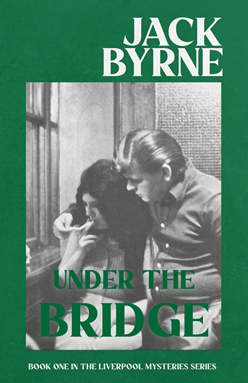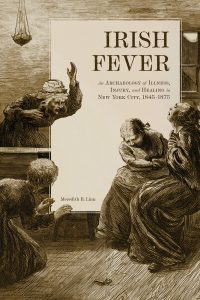
UNDER THE BRIDGE and IRISH FEVER
I told you last month that I was starting to read Under the Bridge, the first of Jack Byrne’s trilogy, which covers a hundred years of the connection between Liverpool and the author's ancestral home of Wicklow. The other two are Across the Water and Before the Storm.
After the first few pages I predicted that it was going to be
a brilliant read and, while I am no Nostradamus, my forecast was
accurate.

|
The author was born and reared in Liverpool but his father emigrated for Wicklow, near the beautiful Vale of Avoca, after WW2.
Jack says, “My Irishness came late. It was delayed by
tragedy and a commitment to class. The idea to which we attach our
identity is not always chosen freely at first. It comes from the water
we swim in, the roads we travel along and the events and people we meet.
The identity we finally accept is in our hands. We determine who we
are, not where and when we are.”
The tragedy he refers to was the suicide of his older
brother in Ebrington barracks, Derry, in Nov, 1975. It was three days
before Jack’s fifteenth birthday. “He used the rifle issued by Her Majesty’s Government to kill an Irishman. Himself.”
His Irishness may, as he says, come late but he certainly
has his finger on the pulse of life on both sides of the Irish Sea, not
just now but, whether through genetic memory or what, for decades
before he was born. In thirty nine chapters he takes us through stories
of love, hate, intrigue, bent cops and every crime imaginable including
murder. He told me, “My three novels in The Liverpool Mystery
trilogy are not the story of my family, but of families like mine, who
have crossed the Irish sea to build new lives and families.” Some of
those fictitious characters are not nice people. The reader is given
insight into Jack Power, a Wicklow man and his cohorts who are involved
in some heavy duty criminality. The book starts with a human bone being
unearthed on a building site by a JCB. It is spotted by Michael, an
Irish caretaker. This led to a long journey by Vinny Connelly, a
student, and Anne McCarthy, a journalist. In their search for the truth
they are led to a labyrinth of deceit, greed, threats and double
crossing. Their mission involves enough twists, turns and Cul-de- Sacs
to rival any scene in the best of Richard Osman’s works. Jack Byrne can
describe in detail anything from Liverpool weather to an uncouth
Irishman eating toast to a Tipperary man breaking a haulier’s finger
while working for Jack Power and Anne McCarthy’s one-night stand with a
cop, all done through a prowess with words that very few writers
possess.

|
What led to this son of a Wicklow emigrant being able to, in the words of D. H. Lawrence, “… muse and thunder in such a lovely language"?
Perhaps the author himself gives us a clue, ” By the
mid-seventies, I had chosen. I stood at the bus stop in Speke council
estate, briefcase in hand, waiting for the bus to a grammar school. My
parents had left for work before we got up. Two sisters were next to me,
waiting for the bus to a local factory. I remembered Heath saying “it
is the government or the miners” and being happy the miners won. A shop
steward brother introduced me to Paul Mackintosh Foot and The Ragged
Trousered Philanthropists. I couldn’t decide between Slade and T-Rex,
but did decide The Communist Manifesto spoke for me. The working class
is still the spectre haunting Europe.”
Under the Bridge is published by Northodox Press and when you read it you will certainly want to read the other two in the trilogy.
* * * * *

|
During the Irish Potato Famine of the nineteenth century, about
one million Irish people perished from starvation and disease, while
more than two million fled the country in fear and desperation, with
some 850,000 landing in New York City. In this book Meredith B. Linn
explores three kinds of afflictions—typhus fever, tuberculosis, and
work-related injuries—that disproportionately affected Irish immigrants,
tracing how existing medical ideas and technologies intersected with
American prejudices to further conspire against this once culturally
distinct group. Linn makes a compelling case for how Americans’
interpretations of the visible bodily changes wrought by typhus fever
and injuries contributed to dehumanizing biases against these new
immigrants, while tuberculosis—with its symptoms of fatigue, pallor, and
emaciation—enabled Americans to see individuals beyond stereotypes and
to recognize the equal humanity of the Irish.
Irish Fever is published by University of Tennessee Press.
Happy Easter.
See you in May





No comments:
Post a Comment